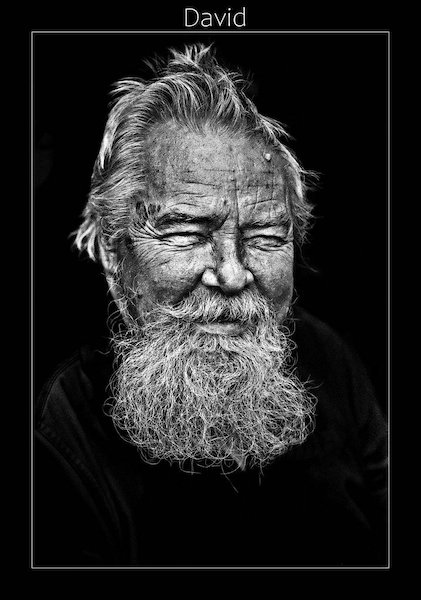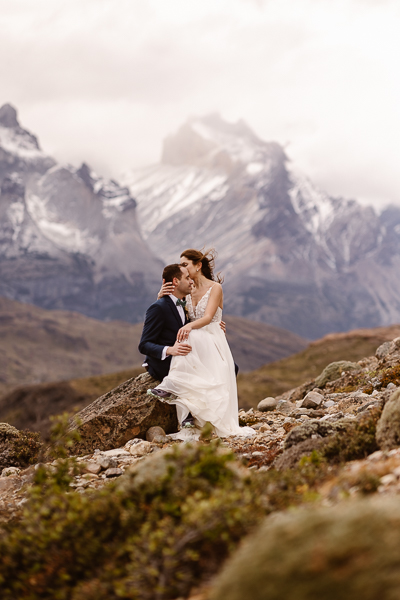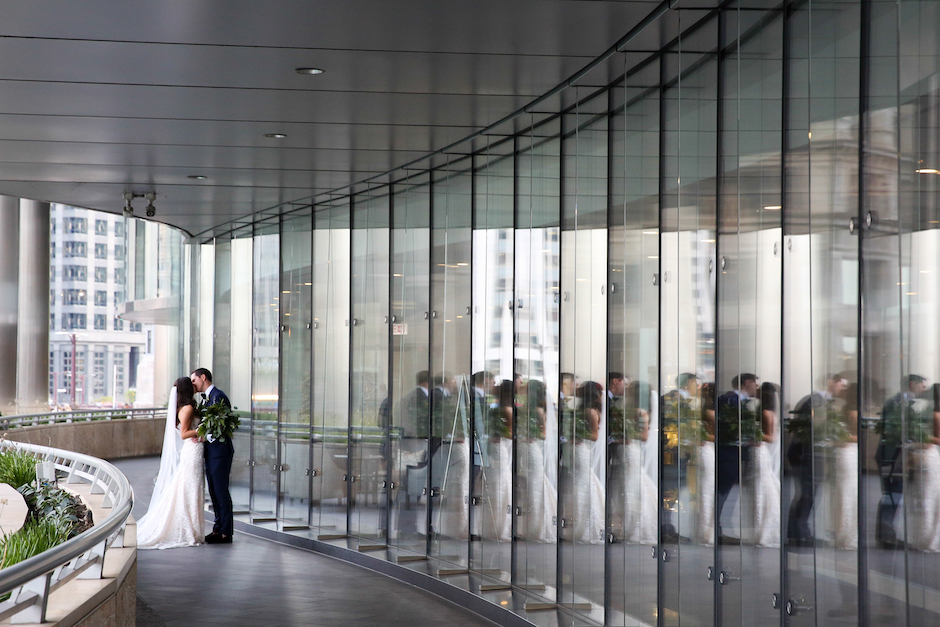Three Photographers, Three Portable Portrait Studios
July 25, 2013
We all, likely, experience a sense of nostalgia for the memory of having our picture taken at a portrait studio—whether it be with a department store Santa Claus, for a school yearbook, or sitting for a cherished family photo. These days, the concept of the professional portrait studio is helping to reinvigorate photographers’ personal projects. Examples of the temporary studio abound—including a recent installation in Times Square by French street artist and photographer J R, who invited the public to take self-portraits in a photo booth truck and then wheatpaste the prints to the sidewalk; a unique session (and exhibition) by famed photographer Martin Parr at the Aperture Foundation gallery; John Delaney’s temporary portrait studio setup in Mongolia; and an invitation for a free portrait session with Caroll Taveras at New York’s Underline Gallery. Today’s studio has evolved to a new DIY esthetic, and while these three projects may be very different, we think it’s an interesting trend to watch.
Martin Parr: A “Beachy” Shoot
British photographer Martin Parr is already legendary for his street and documentary photography, but what if you could have your own portrait taken by him at a temporary studio? Parr collaborated with Aperture Foundation in May to do just that—opening the doors to the public for a portrait day with the artist, coinciding with his “Life’s a Beach” exhibition on view at the gallery. For a reasonable sum of $400, potential subjects were able to make an appointment to have their photo taken by the great British photographer and were given a signed 8 x 12 print by the artist afterward. (A portion of the proceeds was donated to the nonprofit organization.)
Parr and Magnum Foundation originally conceptualized the temporary photo studio, the basic principle being to photograph people with their families, pets and objects of their choice. It was first staged in Paris, then London, before making its way to New York. “In Paris we had people taking their clothes off, bringing guinea pigs,” says Parr of the city he says was the “craziest” during the shoots. In contrast, the New York location, he says, was “very tame.” And because the day was gray and drizzly in New York it was “all the more reason to cheer up in here,” he adds. “We had cats and dogs, but apart from that, no one took their clothes off. So much for radical New York; it was the tamest of them all” He adds with a laugh, “New York thinks it’s hip but in fact [they’re] a bit behind now; they’re not as exciting.”
 Martin Parr photographs one of his subjects at Aperture Foundation in New York. © Jason Bailey for Aperture Foundation
Martin Parr photographs one of his subjects at Aperture Foundation in New York. © Jason Bailey for Aperture FoundationFor this studio, Parr brings his senior manager (who is in step with all of his plans), his camera (a Canon 5D Mark III), strobes and a backdrop—which he says is different each time, but always a floral pattern. This piece goes along with a theme that runs through his book, Life’s a Beach (Aperture, 2013) for which he picked floral-patterned fabrics that were scanned and interwoven among his images. “This one [backdrop] was very loud. The next time might be more subdued,” he says. “You always want to try different things.”
And what are his tricks for capturing the essence of his subjects while on set? He says he doesn’t have anything up his sleeve because “the process is just straightforward. You make sure everyone’s arranged carefully and then you take some pictures,” he explains. “You do a few variations.”
Parr recalls the portrait day at Aperture as being “nice” because there were cocktails and music to accompany the nine-hour shoot. “We all had a good time,” he says, “and we were selling and fulfilling dreams as well.” He shot just shy of 65 groups of people during the shoot.
As for his demeanor on set he says, “I like people. You go from one shot to the next. I could do it with my eyes shut. It’s a charming thing to do (shooting a portrait of a family). I do a smiling one and a serious one.”
The temporary portrait studio is just one way Parr keeps himself active in the industry. He’s always dreaming up new events, including a recent bookmaking session in Tokyo and an “art of dining” event—a pop-up five-course meal based on his food photography and prepared by his daughter, a chef. He says events like these are a good way to “build up a platform and a chance for people to meet you.” And he’s happy to do it.
 Martin Parr poses with subjects who purchased a photo session with him at Aperture Foundation in New York. © Sophie Finkelstein
Martin Parr poses with subjects who purchased a photo session with him at Aperture Foundation in New York. © Sophie FinkelsteinAll told, Parr’s experience with the “less racy” New York portrait studio seems to be synonymous with his thoughts about the direction of the industry in general. “All I can say is I think people don’t put enough investment or thought into how they present their work. They [photographers] have these set up institutions for dealing with things…instead of being more inventive,” he explains.
He goes on to say photographers should “be more interesting. Think about how you present yourself to the world.”
John Delaney: Pushing Boundaries
When New Jersey-based photographer and master printer, John Delaney, ventured to Mongolia to make a personal portrait series (later titled “Golden Eagle Nomads” and “The Silent Hunt”), he came armed with his wooden 5 x 7 view camera, a portable daylight studio, a vehicle, a translator and a cook (for desolate areas). With this portable studio, which he used to take portraits of the nomadic Kazakh people who, as part of their culture, tame (and hunt with) the Golden Eagle of Central Asia, Delaney created what he terms “a cross-over space where they [subjects] are comfortable. It’s their world that you’re in, but you’ve also created this little pocket that you control. They are still in their comfort zone.” And in departing from his own comfort zone to set up a space for photographing strangers, Delaney found an entrance into a world that would otherwise remain foreign to him.
The traditional culture “seemed so old-world and photographically intriguing,” Delaney says of the families he photographed. He notes that they were very trusting of his presence and they invited him to stay with them while he was working on the series. He says that some of the children helped him set up the studio, which included traditional rugs and other items he found as backdrops and set props; in exchange for their time and assistance he gave the families large-format Polaroid prints.
 An overview of John Delaney’s portrait studio setup in Mongolia. © Solongo Tsevegdorj
An overview of John Delaney’s portrait studio setup in Mongolia. © Solongo TsevegdorjDelaney says this portrait series was homage to Irving Penn; Delaney printed Penn’s Vogue portraits for seven years. He found himself spellbound by Penn’s Worlds in a Small Room book of portraits, which were shot in a mobile tent studio that Penn brought with him around the world while on assignment for Vogue. Delaney used this series as inspiration for his own shoot in Mongolia.
Bringing a portable studio to this community’s environment, Delaney explains, created a “mutually comfortable situation. They aren’t coming out of their world to your studio where they don’t have any anchor. You’re right there within their world but you’ve isolated them for this portrait. And that process changes how they present themselves.”
 A young Kazakh poses for John Delaney with a Golden Eagle, the traditional hunting companion. © Solongo Tsevegdorj
A young Kazakh poses for John Delaney with a Golden Eagle, the traditional hunting companion. © Solongo TsevegdorjIn addition to working with Penn, Delaney spent years working in traditional analog photography as a darkroom printer and photo assistant for portrait greats such as Richard Avedon, Bruce Davidson and Annie Leibovitz. He recently returned to school for a Master of Arts in Digital Imaging at New York’s School of Visual Arts because many of his clients (namely Leibovitz) began shifting over to digital. Here he began focusing on a new digital series of portraits, originally titled “Hoboken Passing.” His interest in documenting “mom and pop” shops in Hoboken, New Jersey that are slowly going out of business with the transitioning economy, brought him inside establishments where he created studios using each shop’s unique ambience. “I didn’t want to bring [subjects] out into the street because it’s these environments that they’ve created over generations and it’s become part of who they are,” he says.
Armed with his digital camera and a portable lighting kit, he incorporates the character inherent to the spaces into his shoots. He allows his subjects to be comfortable in their spaces; for example, when shooting Chickie Vescuso, he realized that the owner of Chickie’s Luncheonette was awkward in his space until he had his cigarette in hand.
 Chick Vescuso, owner/cook of Chickie’s Luncheonette, which has been closed since Hurricane Sandy. © John Delaney
Chick Vescuso, owner/cook of Chickie’s Luncheonette, which has been closed since Hurricane Sandy. © John DelaneyDelaney says if there is something distracting that might take away from the composition on the set, he might remove it. Otherwise he prefers to allow the chaos to dictate the scene. He uses a combination of window light and strobe, usually scouting the locations ahead of time to find the best spot within to set up the “studio.”
A new project is once again taking him to foreign environments—this time to places where his subjects, either victims or perpetrators of gun violence, feel the most at ease. He uses a similar strategy for staging these portraits, bringing a portable strobe kit and his camera to the scene, and photographing his subjects in environments such as their home, an organization or their workplace.
The Caroll Taveras Photo Studio
“It’s an idea I’ve had forever,” says Caroll Taveras of the temporary photo studio she recently constructed in conjunction with her exhibition at Underline Gallery in New York City. Inspired by vintage family portraits from Columbia that she grew up admiring (and which hang on the wall as part of the exhibit), Taveras explains that when she began the portrait studio project, her mother reminded her of her desire to go to the portrait studio as a child.
The impetus for a pop-up version of the portrait studio came about one day when, “out of the blue,” Taveras received a call from a friend who had found a storefront (through a friend of a friend of a friend) who was lending an empty space on Atlantic Avenue in Brooklyn to artists who wanted to do temporary projects. Taveras was supposed to have the space for one month but ended up using it for four. With the concept of charging $5 per person for a photograph she made using her 4 x 5 film camera and a Polaroid camera, the pop-up photo studio was born. By the end of the project, she had photographed more than 250 people.
From there, her “Photo Studio” series began to snowball—soon after she received a phone call from a friend who had access to an old dentist’s office in East London that was being used as a music venue. She did a Kickstarter campaign to raise the money to go to London and ended up shooting in this space for a month. Her presence there helped her land a gig working with the ad agency Mother to stage the portrait project during the 2012 Summer Olympics. Then she got a call from the MOPLA festival in California asking her to set up a studio there. “It’s taken on a life of its own,” she says excitedly.
 Jessica Thomas, from the “Photo Studio, Let Yourself Go” series in New York, where Caroll Taveras asked sitters to laugh. © Caroll Taveras
Jessica Thomas, from the “Photo Studio, Let Yourself Go” series in New York, where Caroll Taveras asked sitters to laugh. © Caroll TaverasTaveras says this project is all about the subject, composition and “creating a dialogue between sitter and photographer.” Taveras uses the same simple setup in every studio she constructs: two strobes with umbrellas, a backdrop and her 4 x 5 film camera. “I’m trying to keep the whole experience of formal portraiture,” she explains. “People keep saying, ‘I feel like you’re looking right through me with that big camera.’ The camera demands attention. So people stop and are curious about it. It’s an experience. Nowadays it’s rare that you’re photographed by such a big camera.”
It’s not always easy to lure people off the street and into her temporary studio, but when they do enter her space, they come with no lack in character or stories.
 Kaye Annette Mannion, a once-agoraphobic woman, from the “Photo Studio, London” series. © Caroll Taveras
Kaye Annette Mannion, a once-agoraphobic woman, from the “Photo Studio, London” series. © Caroll TaverasIn Brooklyn, a couple came in who had been cleaning out their burned-down apartment and “they had been in the same clothes for three weeks—they wanted to be documented at that time, photographed in those same clothes,” she explains. And in London, one sitter had just been mugged the night before and wanted to be photographed with all his bruises; another was an agoraphobic woman who hadn’t left her house in many years but finally got over her fear after her husband died and she was on her own.
Taveras didn’t always aspire to become a photographer; she studied acting at SUNY Purchase, then started taking photography classes and became “obsessed” with it. Instead of opting for the typical route of assistant to pro shooter, she worked at print studios (nearly every single lab in New York). Now, she says, she’s basically considered a master printer.
Taveras also shoots editorial (her first job was Isabella Rossellini for The Guardian, but she’s also recently shot Girls’ Lena
Dunham and DJ Mark Ronson). Whether a celebrity or the public, though, Taveras approaches her subjects in the same manner and likes to do her research. Before she met Rossellini, for example, she found out the actress had done a documentary that is in part about seahorses. This was a perfect foray into conversation with the star. “I was really into seahorses at the time and was trying to find the connection,” she remembers. “These situations can be intimidating (especially if you’re photographing a celebrity) but they’re a person, you’re a person. That’s usually how I approach [a shoot].”




